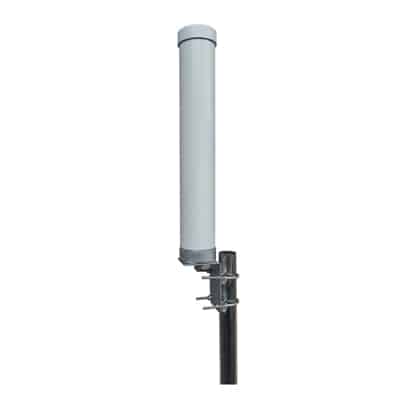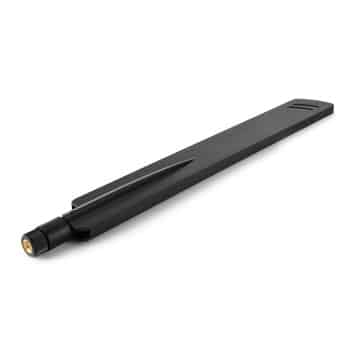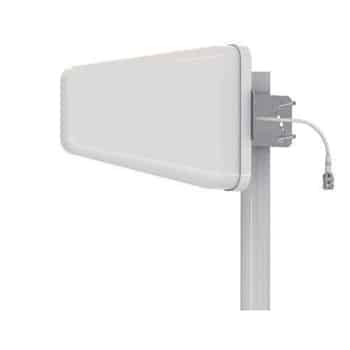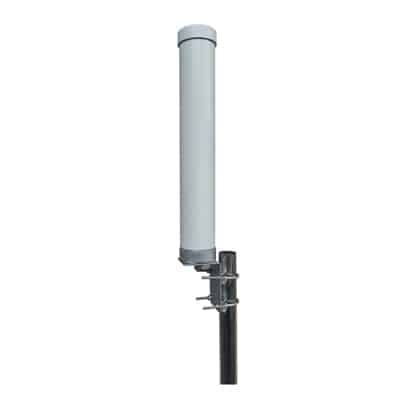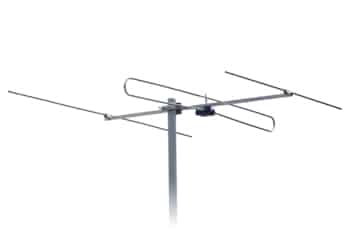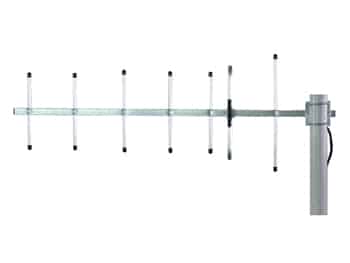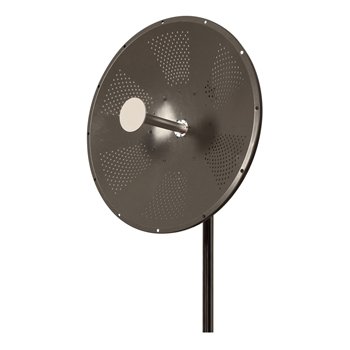
High gain WiFi antennas are important for extending wireless signals over long distances, making them critical for users who are looking to improve their network’s range, stability, and coverage. By focusing the WiFi signals, these antennas improve connectivity in various applications, from urban environments to remote areas.
This article will discuss the core features, types, benefits, and applications of high gain WiFi antenna, exploring how they can be optimally utilized for personal, business, and industrial needs.
Table of Contents
ToggleKey Features of High Gain WiFi Antennas
High-gain antennas differ significantly from standard antennas, primarily in how they amplify and direct signals. Understanding these features will help users make informed choices.
Gain Measurement
The “gain” of an antenna is a critical measure that directly affects its signal amplification capabilities. Gain is measured in decibels (dBi), which represent the antenna’s ability to focus power in a specific direction compared to an isotropic (equal power in all directions) radiator.
- Decibel Measurement (dBi): Gain is measured on a logarithmic scale in dBi. Higher dBi numbers generally mean that the antenna can transmit signals farther.
- Matching Gain to Application: Different gains serve different purposes. Lower dBi antennas are effective for short-range, while higher dBi antennas provide focused, long-range signal transmission.
Directionality and Beamwidth
Beamwidth, or the range angle over which the antenna emits signal power, is another important characteristic of an antenna. High-gain WiFi antennas are generally available in either omnidirectional or directional configurations,
- Omnidirectional Antennas: These antennas transmit signals in all directions within a specific range. They are commonly used for residential and smaller office environments where even coverage is needed.
- Directional Antennas: These antennas are focusing on a specific direction, directional antennas concentrate their signal for greater distances. Examples include Yagi, parabolic, and panel antennas.
The choice between omnidirectional and directional antennas should align with the intended coverage area and distance requirements.
How Do High Gain WiFi Antennas Work?
High-gain WiFi antennas work by focusing and amplifying radio frequency (RF) signals, which increases their range and strength. Unlike standard antennas, which may disperse signals evenly, high-gain antennas concentrate the RF energy in a concentrated direction, allowing the signal to travel farther and maintain higher quality over distance. This focused signal enables the antenna to overcome common limitations like distance, obstacles, and interference, making it possible to extend WiFi coverage to areas with less connectivity.
To maximize effectiveness, high-gain antennas need correct installation and precise alignment. Directional antennas, for example, must be carefully pointed toward the intended area to ensure optimal signal focus. Additionally, placing at a higher place with a clear line of sight helps to minimize signal loss due to obstacles like buildings.
So, high-gain WiFi antennas are a powerful solution for enhancing connectivity across various applications, provided they are installed and aligned correctly for the specific environment and range requirements.
Different Types of High Gain WiFi Antennas
Choosing the right high-gain WiFi antenna is important for meeting specific connectivity needs. Each type of high-gain antenna has unique features in terms of gain, directionality, and range, making it suitable for different environments and applications. Below are the most common types, considering their features, benefits, and uses.
Yagi Antennas
Yagi antennas are widely recognized for their high directional gain, making them a popular choice for point-to-point communication. Their narrow beamwidth allows them to focus the signal in a specific direction, which maximizes range and minimizes interference. The Yagi antenna design includes multiple parallel elements called “directors” that channel the RF energy to a focused, long-distance beam, ideal for rural setups.
Yagi antennas are often used in rural areas to establish links between buildings, access far-off WiFi sources, or set up private networks across properties. They are also important in areas with dense obstructions where focused transmission can bypass the interferences.
Parabolic Grid/Dish Antennas
Parabolic grid or dish antennas use a parabolic reflector to concentrate radio waves into a narrow, high-power beam. This design achieves very high gain and enables connections across several kilometers. Parabolic antennas come in various sizes and designs, with grid-style parabolics being lighter and more resistant to wind, while solid dishes provide slightly better signal focus.
Parabolic antennas are often used in telecommunications, connecting remote WiFi access points or establishing links between buildings that are miles apart. They are ideal for locations where reliable long-distance connectivity is necessary, such as between buildings in different parts of a campus or in an open terrain where no other internet infrastructure exists.
Panel Antennas
Panel antennas are flat, rectangular antennas that offer a balance between compactness and gain. They are moderately directional and can be used indoors or outdoors to cover specific zones, such as open office spaces. Panel antennas are frequently used to target areas where an omnidirectional antenna would be ineffective due to interference or coverage limitations.
Panel antennas work well for targeted indoor coverage in offices, or homes with specific dead zones. They can also be mounted outdoors to extend coverage to specific outdoor areas, such as parking lots, or backyards, which do not need extreme long-range capabilities.
Sector Antenna
Sector antennas emit signals at a specific angle, typically between 60 and 120 degrees, providing focused coverage across a specific sector. They are designed for outdoor applications where WiFi coverage is required over a wide area but limited to a specific directional zone. Sector antennas are often mounted high on towers or poles to broadcast coverage across venues, campuses, or rural neighborhoods.
Sector antennas are popular in outdoor environments that require WiFi coverage over a large area, such as outdoor venues, stadiums, and large campuses.
Applications of High Gain WiFi Antennas
High-gain WiFi antennas serve a wide range of applications across multiple sectors, making them the best solutions for diverse connectivity needs. Each application has unique requirements, and understanding these can help determine the best antenna type and setup your system for optimal results.
Residential Use
In residential settings, high-gain antennas are commonly used to extend WiFi coverage across larger homes, properties, or buildings. Thick walls, basements, or multi-level floors can create dead zones in homes. Omnidirectional antennas can help broadcast coverage to every corner, while directional antennas can focus the signal to reach these dead zones.
Homeowners benefit from reduced dead zones, allowing devices to stay connected throughout the property. High-gain antennas can also eliminate the need for multiple repeaters, leading to a simpler network setup.
Business and Enterprise Networks
Business environments often span large office spaces, warehouses, or multi-story buildings, making WiFi coverage essential for productivity and operations. High-gain antennas help improve connectivity across these larger areas, maintaining strong signals for employee devices, IoT devices, and other important equipment.
Improved network performance and fewer dead zones improve productivity and ensure connectivity for business operations. High-gain antennas are also suitable for providing network access across floors and isolated sections without using excessive network hardware.
Rural and Remote Area Connectivity
Rural and remote areas often face connectivity challenges due to limited access to cellular or broadband services. High-gain antennas, particularly Yagi or parabolic types, can link remote buildings to a central internet hub. These antennas can be configured to access WiFi hotspots from distant locations, making them an excellent solution for extending internet access to underserved areas.
By extending connectivity to isolated locations, high-gain antennas offer remote residents, businesses, and farms reliable internet access, reducing dependency on limited cellular services.
Marine and Outdoor Activities
For outdoor activities such as RV camping, boating, or festivals, high-gain antennas provide strong WiFi signals even in remote outdoor environments. Directional antennas that are waterproof are commonly used to connect to far away WiFi sources, like marina hotspots or park-based networks, ensuring reliable connectivity for users.
With a high-gain outdoor antenna, users can connect to WiFi sources from significant distances, maintaining internet access during outdoor adventures and activities. This is particularly valuable for staying connected in such locations without a fixed internet infrastructure.
Point-to-Point Links
High-gain directional antennas are widely used for point-to-point links, enabling stable, long-range connections between buildings. This is especially valuable for schools, hospitals, campuses, or businesses with multiple buildings that require communication between separate locations. Yagi, parabolic, and sector antennas are often utilized in these applications.
Point-to-point links provide a cost-effective alternative to installing multiple network infrastructures, ensuring secure, long-distance data transmission between facilities.
Military and Defense Applications
In military applications, high-gain antennas are used for secure, long-range communication across challenging environments. The antennas must be reliable and robust to maintain critical connections in areas where conventional communication systems may be ineffective. High-gain antennas, often parabolic or Yagi types, are mounted on vehicles, ships, or stationary bases to extend the range and clarity of communications.
Military and defense personnel benefit from dependable and secure communication links over long distances, ensuring operational success in remote environments.
Benefits of Using High Gain WiFi Antennas
High-gain WiFi antennas offer benefits, making them important for individuals, businesses, and organizations seeking to optimize their wireless networks. Here’s a closer look at the benefits of integrating high-gain antennas into your WiFi setup,
- Enhanced Signal Strength: High-gain antennas improve signal strength, enabling reliable connectivity over longer distances and reducing the chances of dropped connections. This ensures that users have consistent access to high-quality WiFi.
- Improved Network Performance: By directing signals, high-gain antennas minimize packet loss and latency, resulting in faster data transfer speeds. For applications that require real-time data transfer, such as video conferencing, this is important.
- Cost Savings: High-gain antennas help reduce the need for multiple routers, repeaters, or access points, leading to lower equipment and installation costs. A single high-gain antenna can often achieve what multiple standard devices would struggle to cover, making it a cost-effective solution for large properties.
- Flexible Installation Options: High-gain antennas come in a range of styles, including indoor, outdoor versions, allowing them to be installed in different environments. They provide flexible placement options, including wall mounting, pole mounting, or integration into existing infrastructure, enabling easy installation for optimal performance.
- Extended Range and Coverage: High-gain antennas are particularly effective at overcoming barriers to WiFi connectivity, such as walls, metal structures, or other physical obstructions. They can focus signals to penetrate through these obstacles, extending WiFi reach to areas that are hard to access.
High-gain WiFi antennas are devices that can meet the connectivity needs of a wide variety of applications, offering reliable, long-range solutions for everything from small homes to businesses and remote locations. By choosing the right type and installation, users can maximize the benefits of high-gain antennas for stronger network performance.
Does Higher Gain Mean Better Antenna?
A higher gain in an antenna doesn’t always refer to better performance. Gain refers to an antenna’s ability to focus and amplify the signal in a particular direction, and while a high-gain antenna increases range, it may sacrifice coverage area. This characteristic makes high-gain antennas excellent for specific use cases, like point-to-point communication over long distances, but it may reduce performance in applications that require multi-directional coverage.
Focused Beam vs. Broad Coverage
A high-gain antenna, particularly a directional one like a Yagi or parabolic dish, will have a narrow beamwidth that provides a strong, focused signal. This means that the signal can travel far in the chosen direction but may leave other areas with weaker signal coverage. By the way, lower-gain antennas tend to have a wider beamwidth, distributing the signal more evenly over a broader area. This makes them suitable for applications requiring consistent, multi-directional coverage over short distances, such as in smaller homes and offices.
Antenna Gain and Its Effect on Range and Coverage
Gain directly affects both the range and coverage of the antenna, and understanding this relationship can guide you in choosing the right antenna type.
- Increased Range with Higher Gain: High-gain antennas concentrate the RF energy into a narrower beam, allowing the signal to travel farther. This is beneficial for point-to-point communication, where extending the range is important, such as connecting buildings across a large property or establishing links in rural areas with few obstructions.
- Wider Coverage with Lower Gain: Lower-gain antennas, on the other hand, disperse the signal more evenly in all directions. While they do not reach as far as high-gain antennas, they are better suited for applications requiring broad area coverage, like WiFi in a small home or office.
- Signal Strength and Interference Considerations: Higher gain can lead to interference, especially in populated areas where multiple WiFi networks operate close by. For indoor use in such environments, lower-gain antennas are often preferable to avoid interference with nearby networks.
Choosing the Right High Gain WiFi Antennas
Selecting the best WiFi antenna involves careful consideration of several factors that align with the specific needs and environment of the user. Here are the key considerations to guide this decision,
Frequency
WiFi antennas commonly operate on either 2.4 GHz or 5 GHz frequencies, or sometimes both. Ensuring frequency compatibility with your router and other devices is crucial, as mismatched frequencies will prevent the antenna from functioning correctly.
- 2.4 GHz: This frequency is more common for long-range applications and performs well in penetrating obstacles like walls. It is best suited for environments with multiple barriers, such as homes with multiple rooms.
- 5 GHz: This frequency offers higher speeds but has a shorter range and struggles with obstructions. It is ideal for open spaces where high-speed connectivity is needed over shorter distances.
Many modern routers and WiFi systems support dual-band functionality, allowing the use of both frequencies to maximize flexibility in range and speed.
Environment
The physical setting, whether indoors or outdoors, will significantly impact antenna performance and the type of antenna needed,
- Indoor Use: In indoor environments, omnidirectional antennas are often the best choice because they provide all-around coverage, making them ideal for covering multiple rooms. Lower-gain antennas are usually sufficient for indoor setups since they ensure even signal distribution.
- Outdoor Use: Outdoor environments can benefit from high-gain, directional antennas that focus the signal in a specific direction. For example, a parabolic or Yagi antenna is suitable for point-to-point connections between buildings, while a sector antenna can be used to cover specific areas, like a rural area, with WiFi.
Distance
Distance requirements will also influence the gain level needed,
- Short Range: Lower gain antennas provide a broad coverage area, making them suitable for short distances with a need for all-around coverage, such as within a single room.
- Long Range: High-gain antennas are designed for long-distance requirements and work best in point-to-point setups. They are ideal for connecting remote areas with limited internet infrastructure.
When selecting between high-gain WiFi antenna models, it’s essential to look into the specifications such as gain level, range, and directionality. Online reviews for the antenna, manufacturer specifications, and performance benchmarks can help you select which model will best meet your needs. Additionally, some manufacturers offer product support to guide users in choosing the right antenna for specific applications.
Common Types of Connectors for High Gain WiFi Antennas
Connector types play a vital role in ensuring compatibility and secure connection between the antenna and other devices. Different connectors are suited to specific types of antennas and applications.
SMA (SubMiniature Version A)
SMA connectors are small, threaded connectors that provide a secure connection and are widely used in consumer WiFi equipment. They are common in residential WiFi routers and adapters, making them an accessible option for home users looking to add or upgrade antennas.
N-Type
N-Type connectors are larger, durable connectors that offer excellent weather resistance, making them ideal for outdoor installations. These connectors are typically used in industrial settings, where antennas must withstand harsh environmental conditions, such as on towers or rooftops.
F-Type
F-Type connectors are commonly used in cable TV and certain radio applications. They are not standard in WiFi setups but are compatible with some specific WiFi devices.
BNC (Bayonet Neill–Concelman)
BNC connectors are quick-connect, snap-lock connectors frequently used in UHF/VHF setups. They are less common in WiFi applications but may be found in specific devices that require fast, secure connections.
TNC (Threaded Neill–Concelman)
TNC connectors are a threaded version of BNC connectors, offering added stability and weatherproofing. Preferred for outdoor WiFi installations, TNC connectors are robust enough to handle outdoor conditions while maintaining a reliable connection.
Installation and Setup
Proper installation and setup are vital for maximizing the performance of high-gain WiFi antennas. Here’s a guide on installation tools, equipment, and best practices for optimal positioning,
Tools and Equipment Needed
Installing a high-gain WiFi antenna typically requires a few essential tools to ensure secure attachment and compatibility with your WiFi equipment,
- Mounting Brackets: To secure the antenna on poles, walls, or other structures.
- Wrenches or Pliers: These are needed for tightening connectors, mounts, and screws.
- Coaxial Cable and Adapters: Quality coaxial cables and compatible adapters are essential to connect the antenna to the router. The length of the coaxial cable can impact signal strength, so keeping it as short as possible is advisable to prevent signal loss.
Best Practices for Positioning and Alignment
Positioning and aligning your high-gain antenna correctly can improve performance, especially in reducing interference and maximizing range.
- Positioning: Place the antenna in a high, unobstructed location to ensure clear signal transmission. Roofs, poles, and wall-mounting are good options for outdoor antennas, while indoor antennas should be placed centrally in the area requiring coverage.
- Alignment: For directional antennas, precise alignment is crucial. Point the antenna toward the intended coverage area, adjusting carefully until the signal is optimized.
- Avoiding Interference: If possible, place antennas away from metal objects, electronic devices, and thick walls, as these can block or reflect signals. In environments with multiple WiFi networks, try to avoid common interference channels by selecting less crowded channels.
Challenges and Limitations
While high-gain antennas are beneficial, they also come with certain challenges,
- Obstacles and Interference Factors: Physical obstacles, such as walls, buildings, and even trees, can interfere with the signal. Additionally, other WiFi devices, electronics, and wireless networks operating on the same frequency may cause interference.
- Legal Regulations and Power Limits: Most countries regulate the power output of WiFi devices to prevent interference with other systems. Be sure to check local regulations on WiFi antenna power limits to avoid legal issues.
Conclusion
High gain WiFi antennas provide the best solution for extending wireless connectivity over large distances or in challenging environments. By understanding the unique features, benefits, and limitations of high-gain antennas, users can choose the ideal antenna for their specific needs, from residential setups to business networks and outdoor activities. Whether used for long-range connections or to improve indoor coverage, high-gain antennas are a valuable tool in today’s wireless communication systems.

